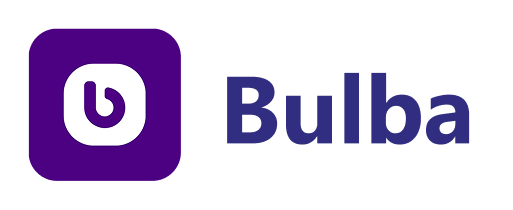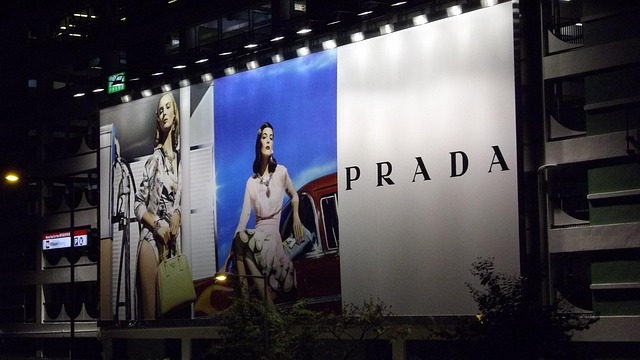How to Grow Your Beauty Brand With UGC?
%20(1).jpg)
In 2025, beauty isn’t just about products on shelves, it’s about stories, trust, and communities built online. From a 15-second TikTok showing a new lipstick shade to an Instagram reel revealing a skincare routine, user-generated content (UGC) is shaping how customers discover and choose beauty products.
But here’s the catch: while beauty brands are investing heavily in social media, many still struggle to define clear influencer marketing campaign goals that drive both awareness and sales. Without a strategy, posts look good for a week but fail to create long-term impact.
So how do beauty brands move beyond vanity metrics and build real growth with UGC? Let’s break it down.
Why UGC Matters for Beauty Brands in 2025
Beauty consumers are more informed, more skeptical, and more community-driven than ever. Polished ad campaigns no longer cut it, shoppers want to see real people using products.
“People don’t buy goods and services. They buy relations, stories, and magic.” – Seth Godin
This is exactly why influencer marketing campaign goals must now revolve around authenticity and community-building.
Here’s what makes UGC so powerful:
- Social proof: Customers trust real people over polished brand ads.
- Relatability: Everyday skincare routines feel more approachable than celebrity endorsements.
- Reusability: UGC can be repurposed for ads, websites, and product pages.
63% of consumers say they’re more likely to buy a product if it’s recommended by an influencer they trust, or have seen them use it.
Source: Influencer Marketing Hub / Dash blog citing Traackr, 2024.
These stats make it clear that for beauty brands, UGC is not optional, but it’s actually quite essential.
Common Challenges Beauty Brands Face
The beauty industry is one of the most competitive spaces out there, where dozens of new skincare products, makeup lines, and cosmetic launches hit the market every single month. While influencer marketing and UGC seem like the obvious growth channels, most beauty brands stumble because they don’t have a clear roadmap.
Here are some of the most common challenges beauty brands face:
1. Undefined Goals
Many beauty brands dive into influencer marketing without setting proper influencer marketing campaign goals. Instead of identifying whether they want to build awareness, boost sales, or generate reusable content, they simply send products out and hope for the best. The result? Wasted time, money, and very little clarity on whether the campaign worked at all.
2. One-Off Collaborations
A single influencer post or one-time shoutout may bring a temporary boost in likes, but it rarely moves the needle long-term. Building visibility in beauty requires consistency, multiple posts, diverse influencers, and repeated touchpoints. Without this, brands fade out of the consumer’s feed as quickly as they appeared.
3. Content Gaps
Even when influencers post, brands often fail to repurpose that content. A few reels on Instagram don’t automatically mean you have enough material for ads, website banners, or product tutorials. Without a proper UGC library, brands end up scrambling for content when launching new campaigns.
4. Tracking Issues
It’s one thing to get influencers to post, but another to know which post or which influencer actually drove conversions. Without automated tracking, brands rely on vanity metrics like likes and comments, rather than actual ROI. This creates uncertainty and makes it difficult to justify budgets.
5. Unreliable Creators
Another common pain point is follow-through. Some influencers accept products but delay posts for weeks or don’t meet brand requirements. This inconsistency disrupts campaign timelines, frustrates brand managers, and makes influencer marketing feel unreliable.
So, these challenges highlight the need for beauty brands to set clear influencer marketing campaign goals and lean on structured UGC strategies that ensure accountability and results.
Beauty Brand UGC Campaign Examples
The most successful beauty brands aren’t just selling products, trust me, they’re selling transformations, routines, and experiences. UGC campaigns allow them to do this authentically by showcasing real people using their products in everyday life.
Here are some beauty brand UGC campaign examples that have worked well across the industry:
1. Before & After Transformations
Skincare brands often encourage users to document their journey over a set period, say, 30 days of using a serum. These posts not only show visible results but also double as powerful testimonials. They align perfectly with influencer marketing campaign goals like building trust and driving purchase intent.
2. Routine Challenges
Campaigns such as “#7DayGlow” or “MorningWithXYZ” invite influencers and customers to share how they integrate a brand’s products into their daily routines. This creates consistency in exposure and helps audiences visualize where the product fits into their lifestyle.
3. Tutorial Reels and How-To Guides
Makeup and skincare influencers thrive on creating tutorials. Whether it’s a “5-minute morning routine” or a “get ready with me” video, these tutorials break down how to use products step-by-step. For brands, this is invaluable content that educates customers and reduces purchase hesitation.
4. Unboxing & First Impressions
Audiences love raw, unfiltered first reactions. Beauty brands that encourage unboxing stories or TikToks from everyday users or micro-influencers gain credibility because the content feels spontaneous, real, and not staged.
5. User Voting Campaigns
Some brands take it further by letting customers vote on shades, packaging, or names of new products. The resulting UGC doesn’t just promote the launch, it makes the community feel like co-creators. Can you believe that?
These examples highlight how beauty brands can move beyond static product ads and instead focus on storytelling. Each campaign type not only creates engagement but also ties directly back to specific influencer marketing campaign goals such as boosting awareness, increasing conversions, or building loyalty.
Benefits of UGC for Cosmetics Brands
Still questioning whether UGC is worth the effort? Let’s look at why it’s one of the strongest tools beauty brands can use in 2025:
1. Builds Trust and Credibility Faster
Shoppers are skeptical of heavily edited campaigns. Seeing real customers or influencers post authentic content about a product is far more persuasive. In fact, UGC acts as social proof, basically, if others are using it, it must work, simple right?
2. Creates a Stream of Authentic Content
Content demand is quite endless in beauty, I mean, ads, website banners, TikToks, product pages, and launch campaigns all require visuals. UGC provides a constant pipeline of relatable, diverse content that brands can reuse without always staging expensive photoshoots.
3. Expands Reach Through Communities
When influencers and customers post about your product, you don’t just get their endorsement, but you also get access to their entire network. For smaller beauty brands, this can mean exposure to tens of thousands of new potential buyers who might never have seen them otherwise.
4. Improves Purchase Confidence
Consumers want reassurance before buying. A review from someone with the same skin tone, hair type, or skin concern can directly influence a purchase decision. UGC gives potential buyers that validation.
According to The 2024 Influencer Marketing Report released today by Sprout Social, an industry-leading provider of cloud-based social media management software, 49% of all consumers make daily, weekly, or monthly purchases because of influencer posts, with 30% trusting influencers more today than they did just six months ago.
5. Reduces Marketing Costs
Compared to running polished ad campaigns, UGC-driven strategies are cost-effective. Gifted collaborations or UGC licensing often provide more ROI than a single high-budget campaign shot in a studio.
If you look at it, when a brand is tied back to influencer marketing campaign goals, these benefits don’t just help brands sell products, but they also help create long-term loyalty and a strong brand community.
How Bulba Helps Beauty Brands Scale With UGC
This is where Bulba changes the game for beauty brands. Unlike platforms that only connect you to influencers, Bulba offers a complete UGC + influencer marketing solution.
Here’s how Bulba supports your growth:
- Gifted Collaborations → Send products to influencers in exchange for authentic reels, stories, or tutorials.
- Paid Campaigns → Partner with beauty creators for larger influencer marketing pushes.
- UGC Licensing → Reuse influencer content across ads, websites, or product launches.
- AI Smart Matching → Match your brand with creators who specialize in skincare, makeup, or haircare.
- Performance Tracking → Know which posts actually drive results.
- Fair-Play System → Influencers are required to post within deadlines, basically, there is no need for chasing.
Want to see how this works for your brand?
Book a demo today and discover how Bulba can help scale your influencer marketing campaigns.
User-Generated Content Ideas for Skincare
If you’re building a skincare brand, here are some user-generated content ideas for skincare campaigns that align with influencer marketing campaign goals:
- Skincare Diaries → Customers documenting their 7-day or 30-day progress.
- Ingredient Spotlight → Short videos explaining the benefits of active ingredients like niacinamide or hyaluronic acid.
- Skincare Shelfie → UGC showing your product as part of a user’s “shelfie” lineup.
- Day-to-Night Routines → How your product fits into both AM and PM skincare.
These ideas don’t just generate content but also fuel beauty brand UGC campaign examples that can be reused for ads and launches.
FAQs
Q1. Why are influencer marketing campaign goals important for beauty brands?
They ensure your influencer collaborations are tied to real outcomes like sales, engagement, and brand awareness, instead of just likes.
Q2. What are some beauty brand UGC campaign examples I can try?
Transformation challenges, unboxing stories, tutorials, and routine-based content are highly effective.
Q3. What are the benefits of UGC for cosmetics brands?
It builds trust, lowers ad costs, provides reusable content, and helps influence purchasing decisions.
Q4. Can small skincare brands also use Bulba?
Absolutely. Bulba is built for both indie beauty brands and global cosmetics companies. With affordable pricing and smart AI tools, even small players can scale their UGC campaigns.
Conclusion
Beauty marketing in 2025 is no longer about glossy magazine ads but also about community-driven storytelling. The brands that win are the ones that align their influencer marketing campaign goals with authentic UGC, turning customers into advocates.
By using real stories, diverse content, and reliable creator partnerships, your brand doesn’t just sell a product, but builds trust and loyalty that lasts.
So tell me this, are you ready to take your beauty brand to the next level?If yes, explore how Bulba.app can help you scale with influencer-driven UGC campaigns today!




.jpg)
.jpg)
.png)